Texas Death Records and Death Index
It may surprise you to learn how often genealogists face this particular set of circumstances. They are aware of when their ancestor was born, when they may have married, when their children were born but they just can’t find out when they died.
There are a fair few instances where the only information missing is the death date which can be very frustrating. This is why knowing what death records may be available to you can be vital in your research.
It is important to note that one of the biggest issues in finding a death record can be looking in the wrong place. You may be surprised how often people miss records because they are looking in the wrong county and sometimes even the wrong state.
In this post we will be looking at Texas state death records and indexes to try and help you find those elusive ancestors. So if you are confident that your ancestor likely died in the state of Texas then read on and hopefully we can help you out.
About Texas
It was in 1718 that Spanish Missionaries founded San Antonio in Texas becoming the first Europeans to settle in the area. Conflicts with the local Native Americans meant that the region remained sparsely settled until after the Revolutionary War and Mexican War of Independence.
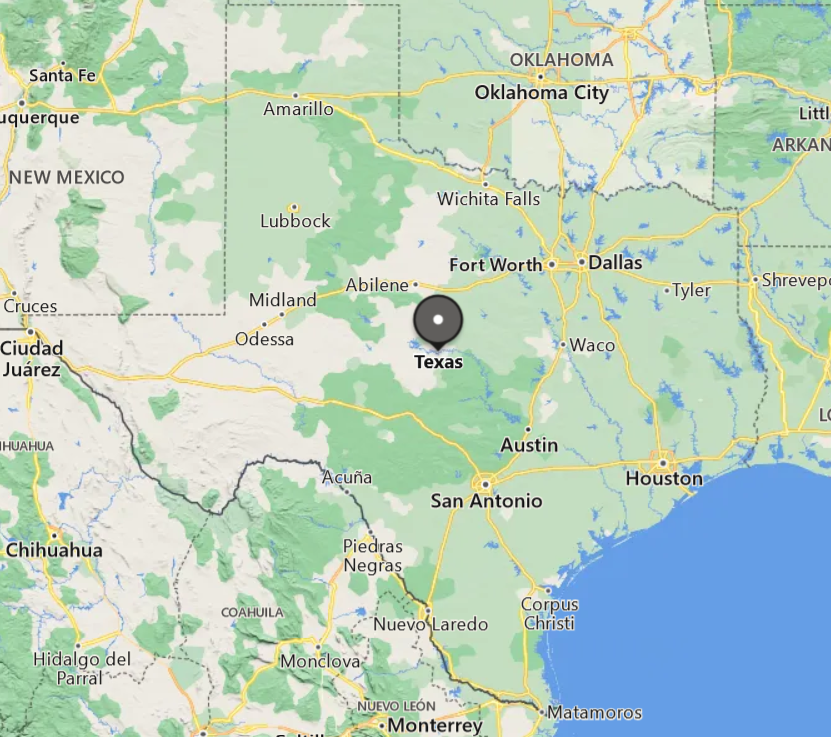
The new Mexican government began to allow U.S. settlers into the region and the population exploded rapidly. In 1836 the Texas Revolution broke out and the state became an independent nation. It was unable to protect itself from incursions by Mexican Troops, however, so Texas negotiated with the United States to join the Union.
Texas would officially become a U.S. state on December 29th 1845 becoming the 28th to do so.
Social Security Death Index 1935 – 2014
All American citizens, naturalized immigrants and resident aliens require a Social Security number for proof of identification and authorization to work. This number follows us throughout our life and when we die this nine digit code is very important.
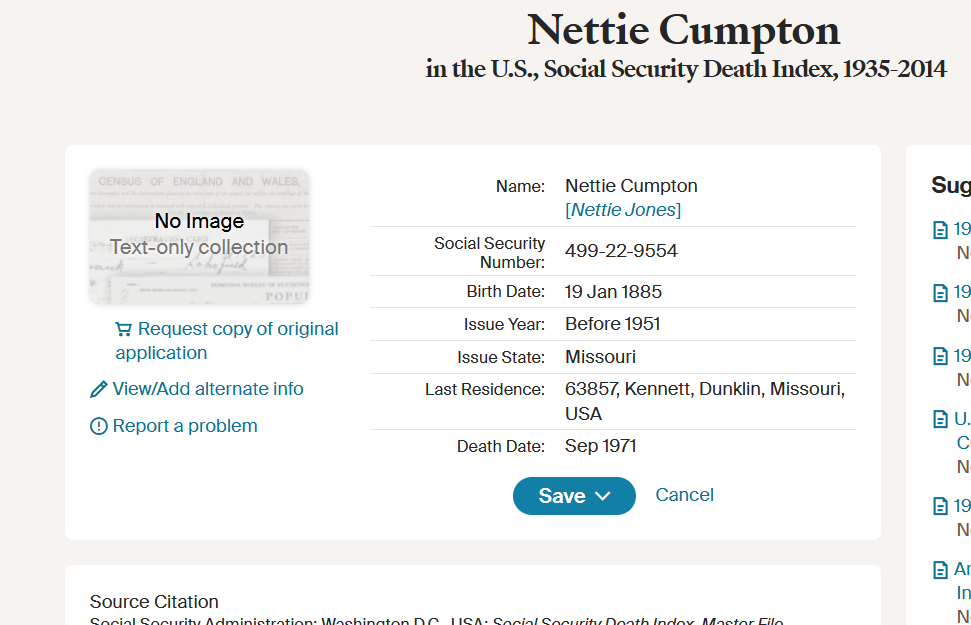
The Social Security Death Index (SSDI) is a database of death records that was compiled from the United States Social Security Administration Death Master File. This was until 2014 when the rules changed and public access to the Death Master File had to take place through a certification program.
Those researching the deaths of ancestors in this state will likely find that most people who have died between 1936 and 2014 can be found on the Social Security Death Index. This does however only hold true if the person had a Social Security number when they died.
It is estimated that since 1973 the SSDI recorded 93% to 96% of the deaths of individuals aged 65 or over. The index was updated frequently and by June of 2011 there were 89,835,920 records available.
The index can be found on websites such as FamilySearch and Ancestry.com and offers details such as:
- Given name and surname (middle initial since the 1990s)
- Date of birth
- Month and year of death (Full date of death for accounts active after 2000)
- Social Security number
- State or territory Social Security number was issued
- Last place of residence when alive including ZIP code
Click here to search Social Security Death Index 1935 – 2014
U.S. Social Security Applications and Claims Index, 1936-2007
This is more or less an extension of the information you can find from the Social Security Death Index. It has been extracted from the SSDI records but features more details. It does not include all of the names found in the SSDI however but there are at least 49 million names included.
In this record you may find additional information such as:
- Date and place of birth
- Parents' names who, if deceased, would have been over 75 when you are viewing the records (may be redacted if under 75)
- Citizenship status
- Gender
- Sometimes race or ethnic group
Click here to search U.S. Social Security Applications and Claims Index, 1936-2007
Texas Death Records Index 1903 – 2000
In the state of Texas the State Department of Health holds the responsibility for recording all deaths. This has been the case since 1903 so in this index there is a list of all the state recorded deaths since then up until the year 2000.
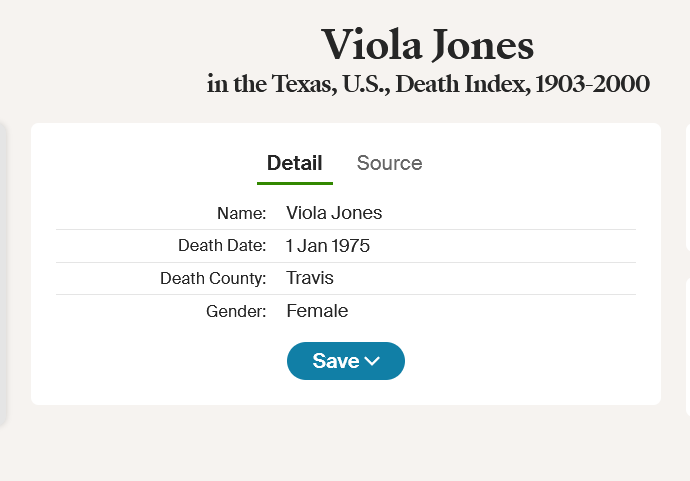
This index is on Ancestry.com so it will require a paid membership to use. There are no digital images of death certificates in this index, only transcriptions of some of the basic information included on those official documents.
The most important aspect is the death certificate number which is vital if you wish to order a copy of the death certificate from the state.
Click here to search Texas Death Records Index, 1903-2000
FamilySearch Texas Death Records Index, 1903-2000
This is essentially the same index as above but in this case it is found on FamilySearch which is a free website. Owned and operated by the Church of Jesus Christ and Latter Day Saints out of Utah it is completely free for those with a registered account.
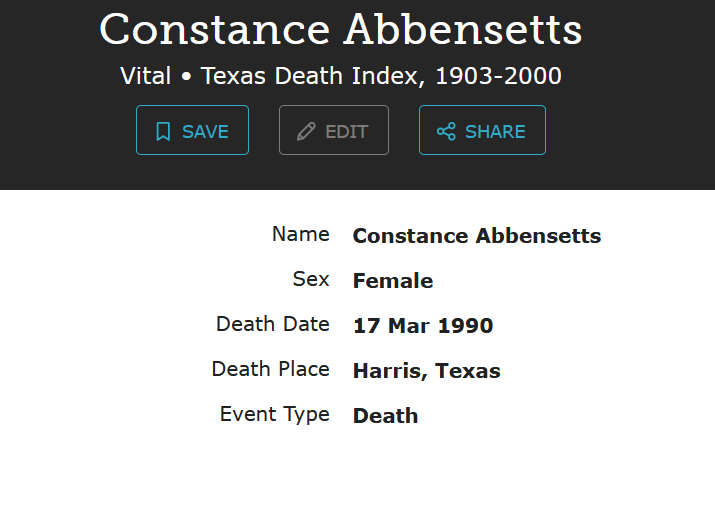
Click here to search Texas Death Records Index, 1903-2000
Texas Death Certificates, 1903-1982
This is another Ancestry.com collection so again you will need a paid membership to use it. It is not an index as before but is actually a collection of digital scans of Texas death certificates. Using the certificate number from the index you can search this collection for the correct document.
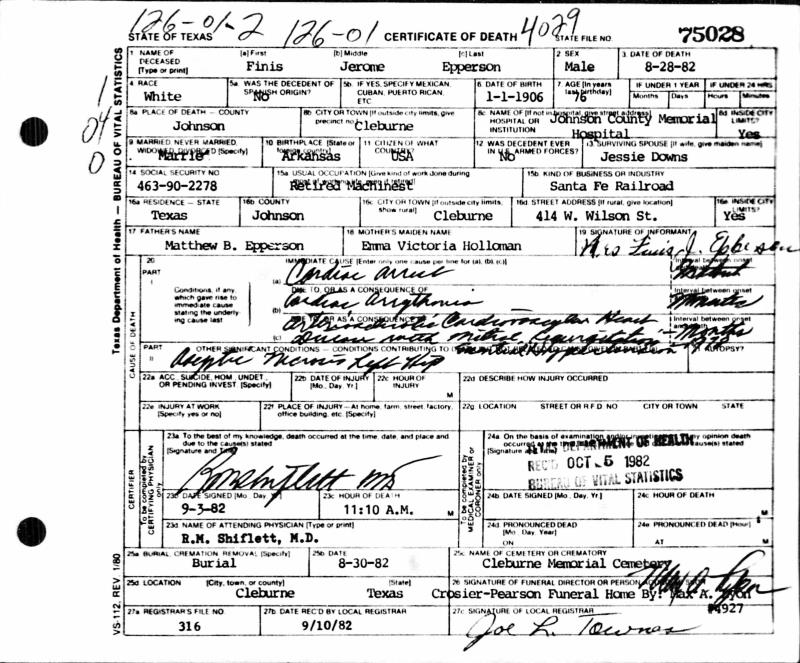
You may wonder why you should check the index first instead of just searching this collection. The answer is simple, sometimes the handwriting on these documents is not great and the indexing may be inaccurate. This can lead you to not finding the certificate. The index gives an extra chance to find the correctly indexed certificate number which can avoid you missing the document you are seeking.
The certificates in this collection can give you information such as:
- Name
- Age
- Birth date
- Birthplace
- Sex
- Race
- Address
- Death date, time, place, and cause
- Occupation
- Spouse’s name
- Father’s name
- Father’s birthplace
- Mother’s name
- Mother’s birthplace
- Marital status
- Informant’s name
- Details on accident or injury
- Burial location
- Funeral director
Click here to search Texas Death Certificates, 1903-1982
Texas Death Records, 1890-1976
This is the FamilySearch version of the above death certificate which again is free to use as long as you have a registered account with the website. This one also includes deaths recorded prior to the 1903 start of state death records. However, it stops a few years short of the Ancestry version which goes until 1982 while this one only extends to 1976.
Click here to search Texas Death Records, 1890-1976
Death Records Indexes, Obituaries and Cemetery Burials by County
When searching for death records such as obituaries, death registers and burials it is good to check at the county level. This is because from earlier death records much of the reporting occurred at the county level.
Conclusion
Texas is one of the biggest states so its collection of vital records is quite extensive due to sheer population. There are plenty of statewide options for research but there are also a lot of county specific websites that can be helpful as well.
Link To or Reference This Page
We spent a lot of time downloading, cleaning, merging, and formatting the data that is shown on the site.
If you found the data or information on this page useful in your research, please use the tool below to properly cite or reference Name Census as the source. We appreciate your support!
-
<a href="https://namecensus.com/blog/texas-death-records-and-death-index/"> Texas Death Records and Death Index</a>
-
" Texas Death Records and Death Index". NameCensus.com. Accessed on April 20, 2024. https://namecensus.com/blog/texas-death-records-and-death-index/.
-
" Texas Death Records and Death Index". NameCensus.com, https://namecensus.com/blog/texas-death-records-and-death-index/. Accessed 20 April, 2024
-
Texas Death Records and Death Index. NameCensus.com. Retrieved from https://namecensus.com/blog/texas-death-records-and-death-index/.
